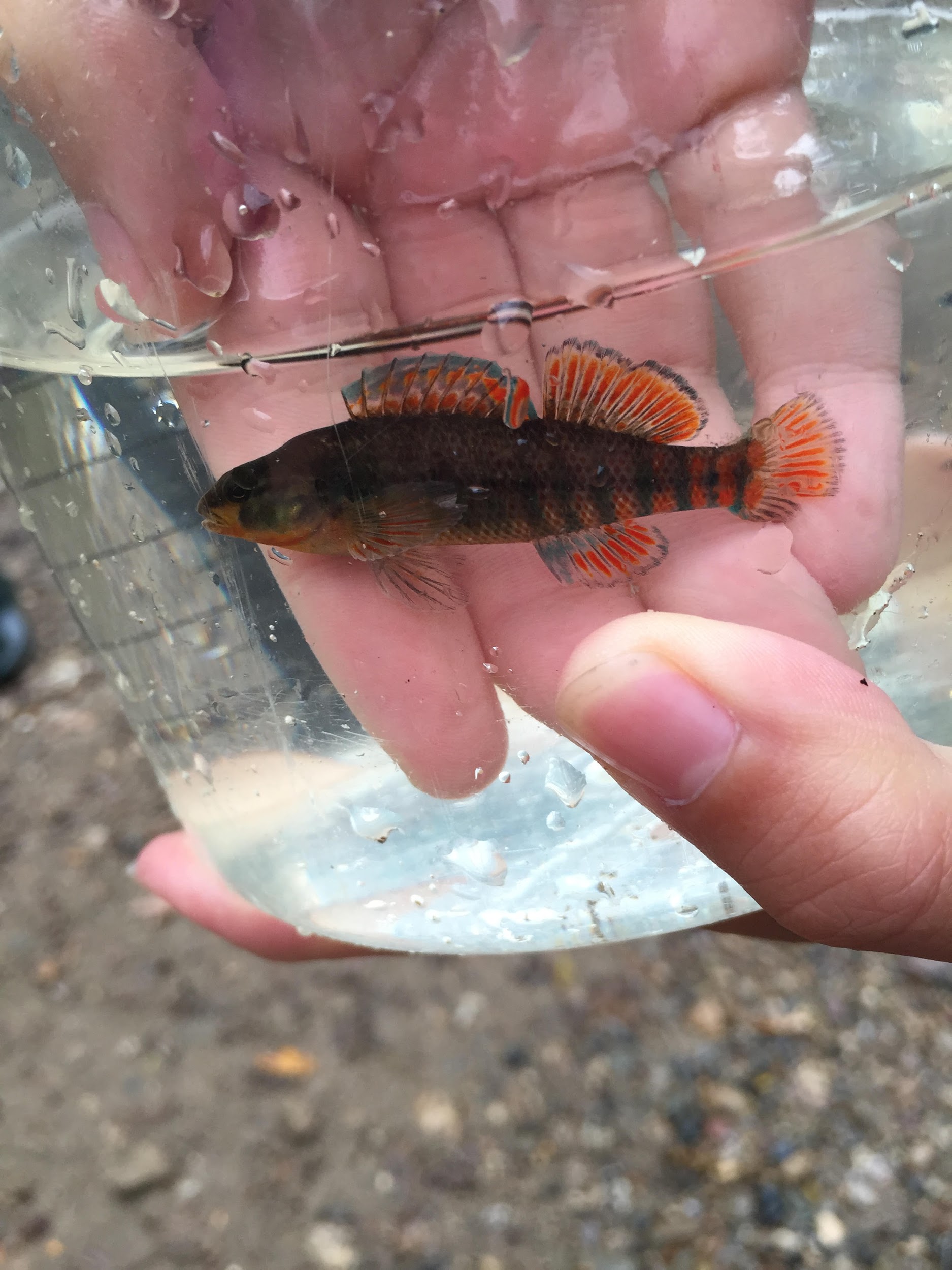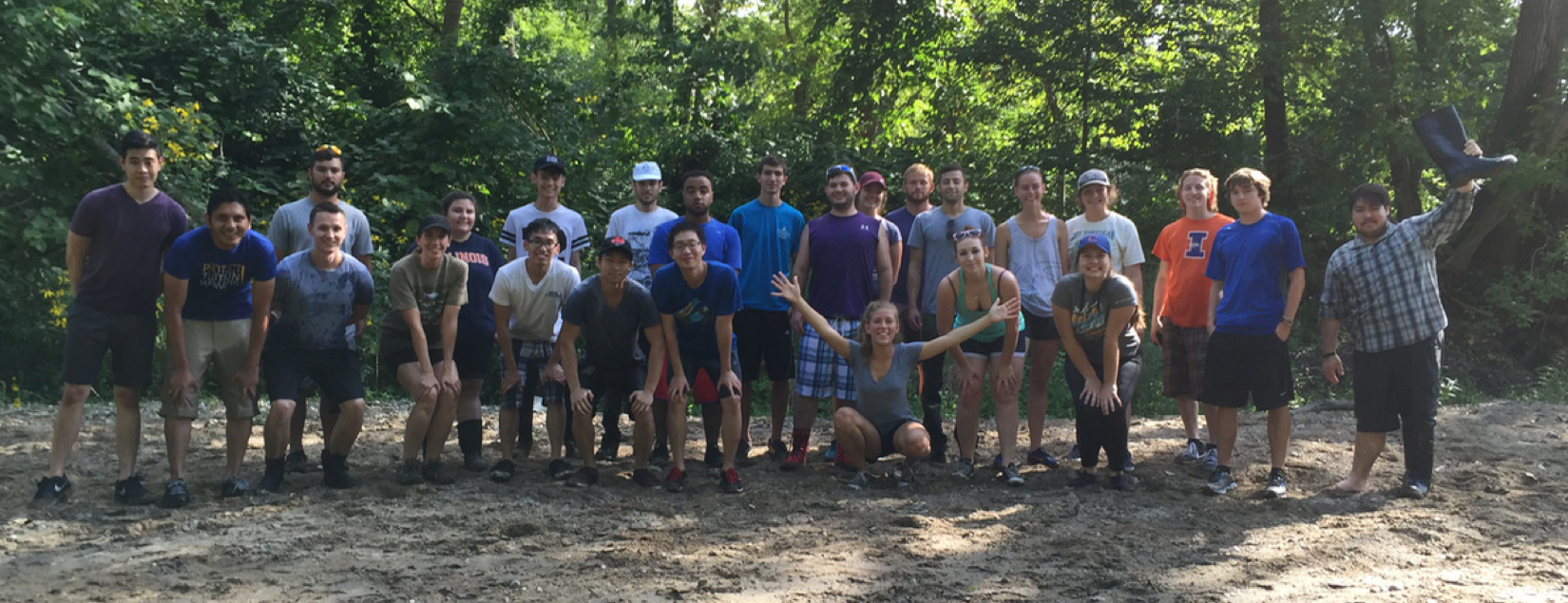Every day thousands of students walk along the engineering quad, crossing the bridge over Boneyard Creek. While many students don’t even notice the creek, it is home to a surprising diversity of fish species. Boneyard Creek is a headwater creek which feeds into many drainages, ultimately leading to the Mississippi River. This ecological connectivity provides continuous habitat for fish migration including several species of sunfish, largemouth bass, and catfish. On any given day, you may find as many as 20 (or more!) different species of fish. Despite being the main aquatic feature, it remains an overlooked part of campus.
The website fishesofboneyardcreek.weebly.com was created to educate unwitting residents and incoming students at the University of Illinois at Urbana- Champaign about the surprising abundance of fish in Boneyard Creek. This website was made by the Ichthyology Classes of 2012, 2014, and 2016. It provides an array of information, including the history of the creek, a list of present fishes, a dichotomous key to identify them, education activities for children, and a volunteering tab that tells how you can contribute to the health of the Boneyard Creek. Many resources are included on this website, and it effectively serves as the information hub for all things Boneyard Creek. Click here to see an underwater video of fish in the creek recorded by Elise Snyder.
The Fishes of Boneyard Creek website is the result of a unique class project that stretched across three different cohorts of Ichthyology students (IB 463 from years 2012, 2014, and 2016). The 2012 course originally made the site. The 2014 course greatly improved it. The 2016 course created videos that explained how to use a dichotomous key. The 2012 class obtained a list of ‘potential’ fish species that could be found in the creek based on historical records from the Saline Branch, into which the Boneyard Creek feeds. The class has continued to sample the creek and to perform numerous class projects. One project has addressed the question of whether fish use the fish ladder at Scott Park. Another project sampled fish with minnow traps. Another project performed seine hauls to assess the fish community.
Creating this website and the accompanying videos not only taught us about the specific characteristics of the Boneyard Creek fish species – it also taught us how to communicate science to the public. We learned not only how to identify the different species of the Boneyard, but we also learned valuable skills like script writing, video editing, and how to present scientific information in a digestible way. These skills are vital in the modern scientific world where there is a heavy emphasis on communication and presentation of findings. Having scientists who are able to communicate with the public ensures that information can be utilized in a meaningful way. We hope that this project continues to go forward and ask/answer meaningful questions about the Boneyard Creek.



